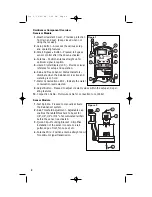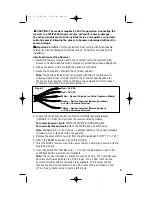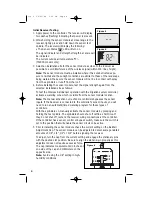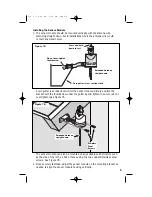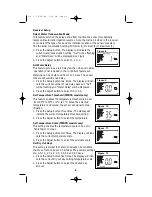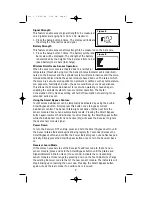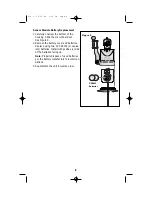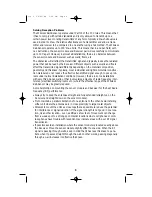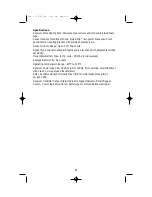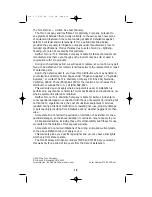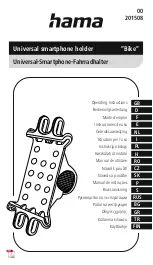
CAUTION: The receiver requires 24 VAC for operation. Connecting the
receiver to a 120/240 VAC power source will result in severe damage.
The sensor module must not be installed inside a rain gutter or any water
collection vessel. Allowing the sensor to become submerged will result in
severe damage.
Important:
Installation of this equipment must comply with all applicable
national and local building and electrical codes. Consult local codes prior to
installation.
Install and Connect the Receiver
1. Install the receiver module next to the controller using the stainless steel
screws or double-sided foam tape provided. Position the antenna straight up.
2. Make sure power to the controller has been disconnected.
3. Route the connection cable into the controller cabinet.
Note:
The Wireless RainSensor can operate with either normally-open or
normally-closed sensor circuits. Refer to the controller specifications for
the sensor type required. If the controller is not equipped for direct sensor
connection, skip step 4 and continue at step 5.
4. Locate the controller’s sensor connection terminals (generally labeled
“SENSOR” or “SEN”) and connect the receiver wires as follows:
For normally-open circuit:
Attach the WHITE and BROWN wires.
For normally-closed circuit:
Attach the WHITE and YELLOW wires.
Note:
Disregard plus (+) and minus ( – ) polarity labels on the sensor terminals
(if present). Cut or tape back the unused wire.
5. Remove the valve common wire(s) from the terminal labeled “COM”, “C” or “VC.”
6. Attach the BROWN receiver wire to this terminal.
7. Twist the WHITE receiver wire to the valve common wire(s) and secure with the
provided wire nut.
7. Cut or tape back the YELLOW wire.7.
Connect the Red power wires to the
controller’s 24 VAC power source terminals.
Note:
The receiver requires a constant source of 24 VAC. The controller may
have two terminals dedicated to 24 VAC input, or a 24 VAC Hot Post and
common terminal. Either connection is acceptable. The receiver will not
function properly if connected to a 24 VAC source that is switched on and
off, such as a master valve or pump start circuit.
3
Red – 24 VAC
Red – 24 VAC
White – Sensor Terminal or Valve Common Wire(s)
Brown – Sensor Terminal (Normally-closed)
or Valve Common Terminal
Yellow – Sensor Terminal (Normally-open)
or Valve Common Terminal
Figure 3
Doc 5 12/21/04 6:36 PM Page 3


